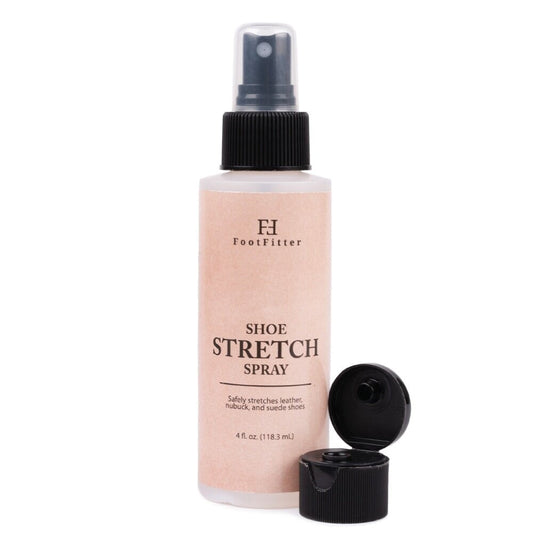
Old Shoes: When is It Time to Kick Them to the Curb?
Share
When you fall in love with a pair of shoes, it’s often hard to let them go. However, you shouldn’t wait until your toes are popping out of your old shoes to get rid of them. After all, with holes and worn out soles, your feet become more prone to infection and painful strain.
It may be hard to accept, but not all shoes are created equal. Some styles wear much quicker than others.
To help you out, here at FootFitter, we created a general guideline explaining when you should head back to the shoe store, depending on which style you’re wearing daily.
SANDALS (1-3 months)

Sandals are a great choice in the summertime. After all, they allow your toes to breathe and are ideal for showing off fresh tans and painted toe nails.
However, there’s a good chance your flip flops will be accompanying you to the beach this summer, which means they’ll be getting wet and sandy. In addition, being so close to your bare feet in the hot sun all day can lead to some pretty bad bacteria living on your sandals.
Since sandals aren’t made to be very strong in the first place, the added environmental challenges quickly wear them out.
For flip flops, it’s best to trade out your pair every month or so. When it comes to fashion sandals, shoe life can be extended to around three months depending on how often and where you wear them.
RUNNING SHOES (3-6 months)

Despite being pricier than your flip flops, running shoes also don’t have a very long shelf-life. However, this makes sense when you consider how much pressure your running shoes undergo. Between running regularly around a track or your neighborhood and taking to uneven terrains, your running shoes withstand a lot of wear and tear.
Moreover, running shoes are one style in your closet that you definitely want to replace at the first signs of wear and tear.
Generally, athletic shoes are made to last for about 350 to 500 miles, which usually spans around three to six months. However, you should also consider factors that cause increased wear like weight and the intensity of your workout.
A small hole or uneven rubber may seem insignificant. However, athletic shoes require proper support so you don’t hurt yourself while working out. In addition, you want your shoes to be properly aligned to ensure your body is correctly aligned while moving around.
When you use your old shoes past their expiration date, you increase your chance of developing issues like the ones below.
SNEAKERS (6-9 months)

Omar Prestwich via unsplash
Typically, sneakers don’t see as much quick damage as your running shoes. On average, you can get about six to nine months of wear out of your streetwear kicks before they’re deemed old shoes.
To further increase your sneakers’ life, regularly cleaning your shoes will keep them looking and feeling fresh. Using cleaning products with natural ingredients offers added benefits because it renews sneakers without causing damage to sensitive fabric, mesh or leather.
If your sneakers are stiff in the heel area, using a shoe horn to slip them on will avoid bending and cracking and help your shoes maintain their form.
HEELS (1-2 years)

Joel Zar via unsplash
Normally, you use heels for special occasions, which means they generally don’t wear as quickly. In addition, when you shell out a small fortune for a pair of Christian Louboutins, there’s a good chance you aren’t just tossing them in your closet.
Judging when your heels have had enough may be a little more difficult than your running shoes or sandals. When polish no longer proves effective at brightening color or damage lingers, it’s time to hit the shoe store.
A broken heel may be an obvious sign to replace cheaper heels but isn’t always a death sentence. To extend the life of your more expensive heels, you can consider replacing parts instead of buying new shoes entirely. If your heels cost more than $200, it’s worth seeking out the help of a cobbler to fix your snapped heel or shifted lining.
DRESS SHOES (5-10 years)

If you wanted the most bang for your buck, it’s time to transform your closet to business wear. That’s right, dress shoes offer the best investment.
Dress shoes are definitely the most costly decision but they also offer the highest quality. Usually, for every $100 you spend, you’ll get about a year of wear out of your dress shoes.
However, paying for your shoes is not the only investment you should be making. It is also necessary to invest in the maintenance of your dress shoes. To best protect your shoes’ shine and shield them from environmental irritants, regularly buff away scuffs and stains and buff in polish.
Remember, the more you care for your old shoes, the longer they’ll last.








